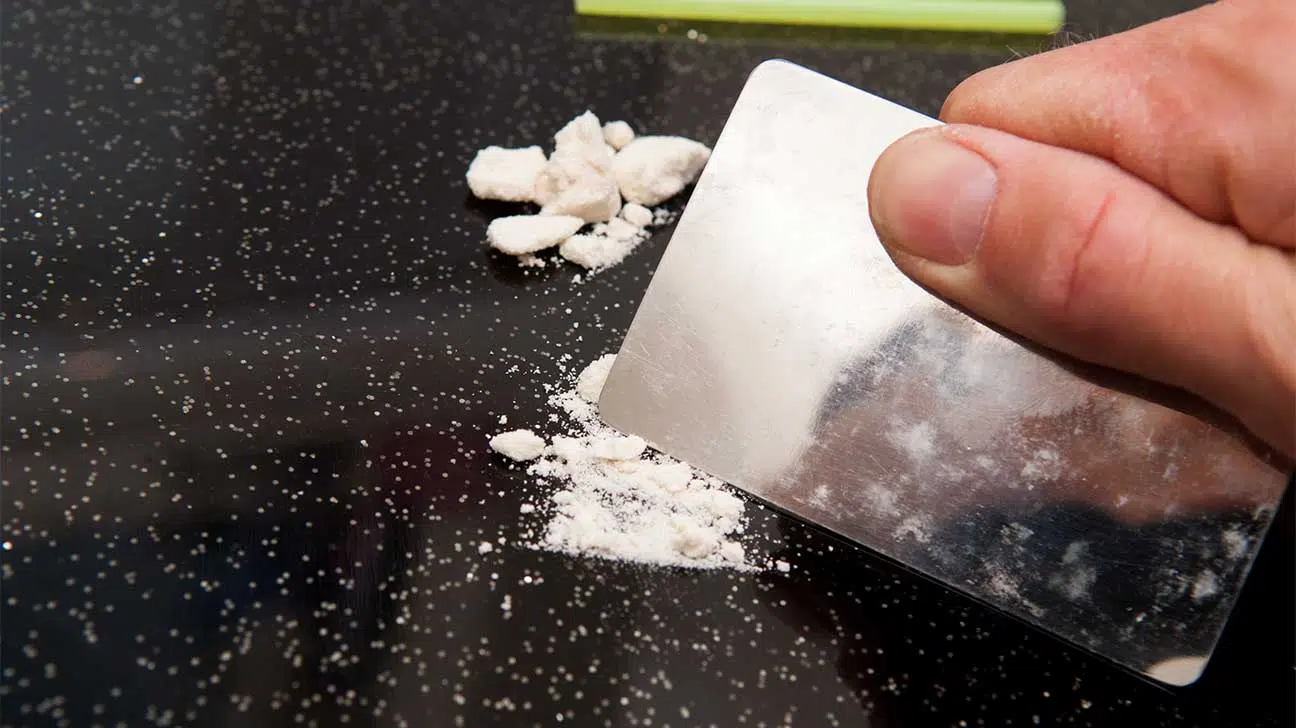Crack Vs. Cocaine: Are They Different?
Crack cocaine and powder cocaine come from the same source, but they are produced differently. While both forms of the drug are dangerous, crack cocaine may be more addictive and produce especially dangerous side effects.

Cocaine is a stimulant drug derived from the coca plant, which is found in South America.
While cocaine abuse and crack cocaine addiction share many similarities being derived from the same source, there are still several differences between the two drugs.
Keep reading to learn more about the difference between cocaine and crack and the risk of substance abuse with either form of the drug.
Are Crack And Cocaine The Same Thing?
Crack is a specific type of cocaine that emerged as an alternative to freebase cocaine, which is powder cocaine with a low melting point.
Crack and cocaine come from the same source. Any differences between crack and cocaine occur during the preparation process.
Because crack and cocaine are prepared differently, they have different appearances and different methods of use.
Appearance
Pure cocaine appears as a white powder substance. Though the substances cocaine is cut with may influence the appearance, it’s typically going to be white in color.
However, crack cocaine looks like small white rocks. When smoked, these rocks produce a crackling sound, which is how crack received its name.
How Is Crack Cocaine Made?
Crack cocaine begins as powder cocaine. The powder is then mixed with water and ammonia, or water and sodium bicarbonate (baking soda). The mixture is heated until it becomes solid.
Once given enough time to dry, the newly solidified cocaine is broken into small pieces.
Learn more about making crack cocaine.
Crack Use Vs. Cocaine Use
Crack and powder cocaine are consumed in different ways.
Generally, powder cocaine is used via snorting, but it may also be rubbed into the gums. Some people may dissolve the drug in water and inject cocaine directly into a vein.
Crack cocaine is generally smoked. Smoking crack also produces an intensely powerful high, though this high may only last for a few minutes.
What Side Effects Do Crack And Cocaine Have In Common?
Because both forms of cocaine come from the same illicit drug, they share most side effects in common.
The side effects of crack cocaine and the side effects of cocaine include both short-term and long-term effects, and they can affect both physical and behavioral health.
Short-Term Side Effects
Crack and cocaine produce a strong sense of euphoria or a high. People who use cocaine may experience increased energy and feel more social.
Some people report temporary feelings of clear headedness when using cocaine, but others report the opposite effect.
In addition to the desirable effects of cocaine, both forms also produce negative short-term side effects.
These short-term side effects include:
- cardiovascular effects from cocaine use, such as an increased heart rate, high blood pressure, and constricted blood vessels
- elevated body temperature
- loss of appetite
- anxiety or panic
- cocaine paranoia
- erratic behavior
- restlessness and insomnia
In extreme cases, the short-term effects of cocaine may include heart attack, seizure, and stroke.
Long-Term Side Effects
Crack and cocaine also share several long-term side effects.
These long-term side effects can include:
- withdrawal symptoms (cravings and discomfort when not using the drug)
- long-term depression, anxiety, or paranoia
- irritability
- insomnia
- malnourishment and weight loss from cocaine use
- convulsions
- loss of cognitive function
- stroke
- heart inflammation and other heart problems
- organ damage
- cocaine-induced seizures
- psychosis (losing touch with reality)
The more cocaine a person uses and the longer they use it, the higher their risk of long-lasting side effects will be.
Do Crack And Cocaine Have Separate Side Effects?
Different forms of drug use produce unique side effects. Because crack cocaine and powder cocaine are consumed differently, they also have some separate consequences.
Cocaine Side Effects
Because powder cocaine is usually snorted, most of its unique side effects impact the nose and sinuses.
A person who snorts cocaine may experience frequent nosebleeds, sniffling, and nasal irritation. They may also experience hoarseness and difficulty swallowing.
When people use cocaine via injection, they may experience vein scarring, vein collapse, and visible marks called “track marks” on the skin.
Injecting cocaine also carries a risk of HIV and other infectious diseases, as some people who deal with drug addiction may share needles.
Learn more about how cocaine affects the nose.
Crack Cocaine Side Effects
Specific crack cocaine side effects result from smoking the drug. In the short term, these side effects often include coughing.
Over time, the long-term consequences of smoking crack may include lung damage and worsening asthma.
Is Crack More Dangerous Than Powder Cocaine?
Both crack cocaine and powder cocaine are addictive and dangerous. However, crack cocaine is somewhat more dangerous because of its intensity and additives.
Immediate Effects
When snorted, powder cocaine may take several minutes or more to produce a high. This cocaine high may last for 30 minutes or longer, depending on purity and a few other factors.
Crack cocaine, however, produces a high almost immediately because it enters the bloodstream more quickly. A crack high is also powerful, but it will often not last longer than five minutes.
Because crack cocaine produces such a quick and powerful high, it may also produce stronger and more dangerous side effects than powder cocaine.
Furthermore, while cocaine overdose is possible with all forms of cocaine, crack cocaine may carry a higher risk due to the reasons above.
Addictiveness
Crack may be more addictive than cocaine because the high that it produces is so short. After a cocaine high, a person may feel depressed, tired, anxious, and numb.
After a short high from crack cocaine, a person may immediately use the drug again to prolong the high and avoid negative feelings. This repeated use may lead to an addiction.
Crack Cocaine Additives
Crack cocaine contains additives that turn it into its rock form.
It may also contain filler ingredients that are unknown to the person who uses it.
Depending on the ingredients, they may cause an allergic reaction or another healthcare emergency.
However, both crack and powder cocaine carry the risk of additives. For example, cocaine laced with fentanyl is a common drug combination, and fentanyl is a highly dangerous opioid drug.
Find Help For Crack Addiction Or Cocaine Addiction
Cocaine addiction is a difficult mental health condition, whether a person uses crack or powder cocaine. Fortunately, addiction treatment is available.
Spring Hill Recovery Center offers several rehab programs in New England including inpatient and outpatient treatment options.
If you or a loved one have a substance use disorder, contact our providers to learn more about creating an individualized recovery plan.
- National Drug Intelligence Center — Crack Cocaine Fast Facts https://www.justice.gov/archive/ndic/pubs3/3978/index.htm
- National Institute On Drug Abuse — How Is Cocaine Used? https://nida.nih.gov/publications/research-reports/cocaine/how-cocaine-used
- National Institute On Drug Abuse — What Are The Long-Term Effects Of Cocaine Use? https://nida.nih.gov/publications/research-reports/cocaine/what-are-long-term-effects-cocaine-use
- National Institute On Drug Abuse — What Are the Short-Term Effects Of Cocaine Use? https://nida.nih.gov/publications/research-reports/cocaine/what-are-short-term-effects-cocaine-use
- National Institute On Drug Abuse — Why Are Cocaine Users At Risk For HIV/AIDS And Hepatitis? https://nida.nih.gov/publications/research-reports/cocaine/are-cocaine-abusers-risk-contracting-hivaids-hepatitis-b-c


